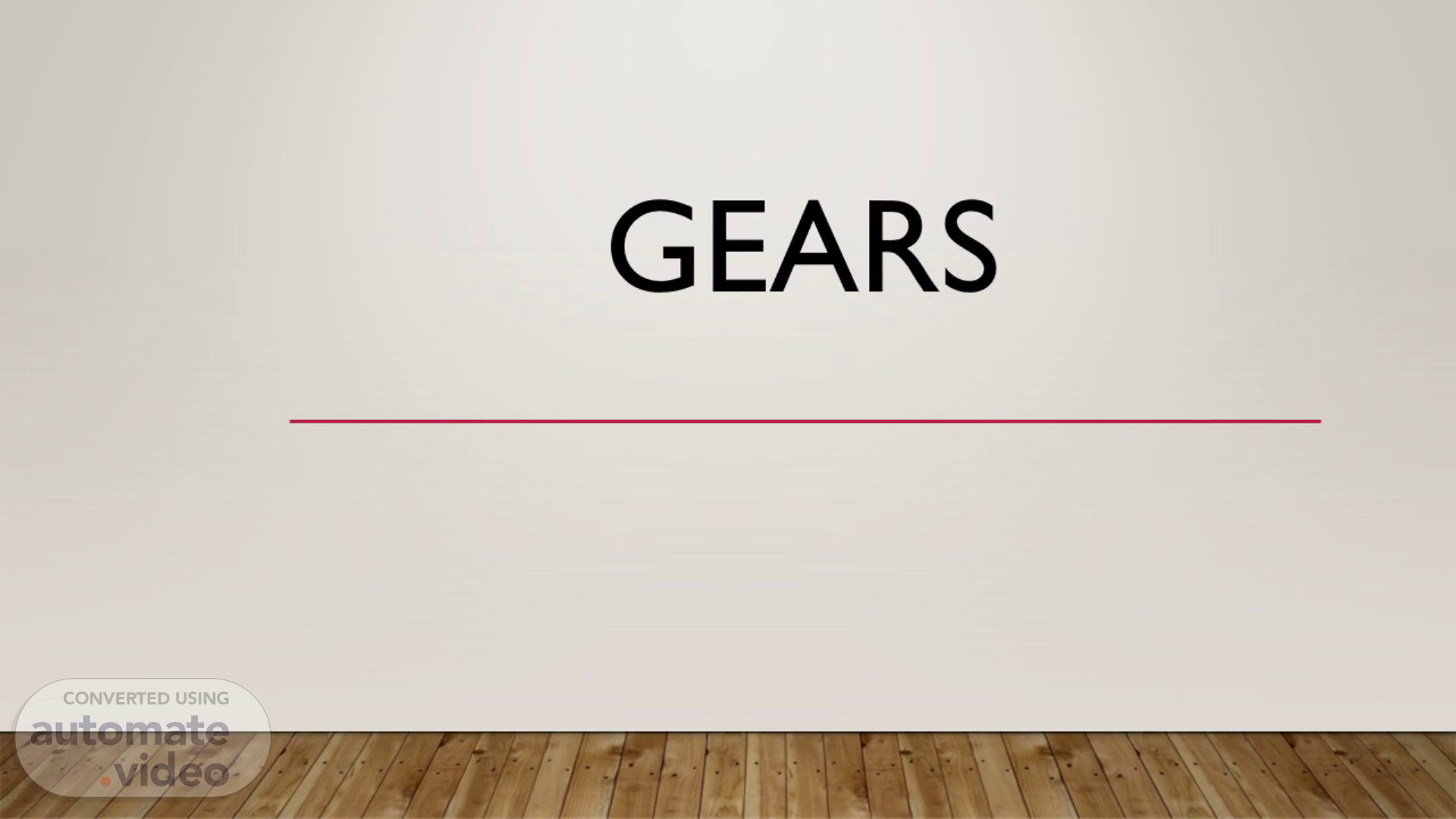Scene 1 (0s)
[Audio] Good morning everyone. Today, we will discuss gears and their various uses and types. Gears are mechanical devices used to transmit power and transfer rotation from one object to another. They are widely used in various fields, including automobiles, industrial machinery, bicycles, and toys. We will discuss the different types of gears, their characteristics, and their applications in detail. So, let's dive in..
Scene 2 (23s)
[Audio] Gears are components used to transfer rotational motion and torque between shafts. We will now discuss the different types of gears and their applications..
Scene 3 (32s)
[Audio] Discussing the uses of gears in various fields such as clocks and watches, automobiles, bicycles, industrial machinery, and toys. Understanding the different uses and types of gears is crucial for designing and maintaining complex systems. Explore more about the intriguing world of gears..
Scene 4 (50s)
[Audio] Gears are crucial components of mechanical engineering. There are six types of gears: Spur Gears, Helical Gears, Bevel Gears, Worm Gears, Rack and Pinion Gears, and Spiral Bevel Gears. These gears are used for various applications. Spur Gears are the most commonly used and are used to transfer power from one shaft to another. Helical Gears are used for applications where a continuous, smooth motion is required. Bevel Gears are used to change the direction of motion between two parallel shafts. Worm Gears are used for high torque applications or when the shafts are of different diameters. Rack and Pinion Gears are used to transmit power between two parallel shafts with different diameters. Spiral Bevel Gears are used for continuous, smooth motion and a change in direction of motion. As mechanical engineers, it is our responsibility to understand the different types of gears to design and build efficient and effective machines..
Scene 5 (1m 43s)
[Audio] Discuss Spur Gears on slide 5. Spur Gears have teeth cut straight across their face and are commonly used for parallel shafts..
Scene 6 (1m 52s)
[Audio] We will discuss the various types of gears and their applications. Gear systems are used in machines and vehicles. We will begin with basic types of gears, including spur gears, bevel gears, and helical gears. We will then explore the characteristics and uses of each type of gear. Spur gears have teeth cut at a right angle and are commonly used in bicycles, cars, and machinery. Bevel gears are used for changing direction and are commonly used in machinery. Helical gears are the quietest and most efficient and are often used in applications requiring a high level of torque. In conclusion, gears are an important component of machines and vehicles. Understanding the different types of gears and their uses can help design and build more efficient and effective machines..
Scene 7 (2m 39s)
[Audio] Bevel Gears are conical teeth gears used to transmit motion between intersecting shafts. These gears are commonly used in various industries such as automobiles, machinery, and aerospace. Understanding the different types of gears and their applications is crucial to select the most suitable gear for our specific requirements..
Scene 8 (2m 58s)
[Audio] We will discuss different types of gears used in various applications, with a focus on worm gears. Worm gears form by a worm and a gear, and are commonly used for large speed reductions in industrial and mechanical systems. Worm gears have a helical shape and the gear has a straight or curved shape. When the worm and the gear are in contact, the worm rotates around the gear, causing the gear to rotate around the worm. The worm and the gear have different pitches, which allows for the reduction of speed. In summary, worm gears are a type of gear that have a worm and a gear, and are used for large speed reductions in industrial and mechanical systems..
Scene 9 (3m 36s)
[Audio] Slide 9: Rack and Pinion Gear System A rack and pinion gear system converts rotational motion into linear motion. This type of gear system is used in steering systems and linear actuators. By using a rack and pinion gear system, we can easily convert rotational motion into linear motion. This allows us to achieve a wide range of motion and precision in our applications..
Scene 10 (4m 2s)
Thank you.
